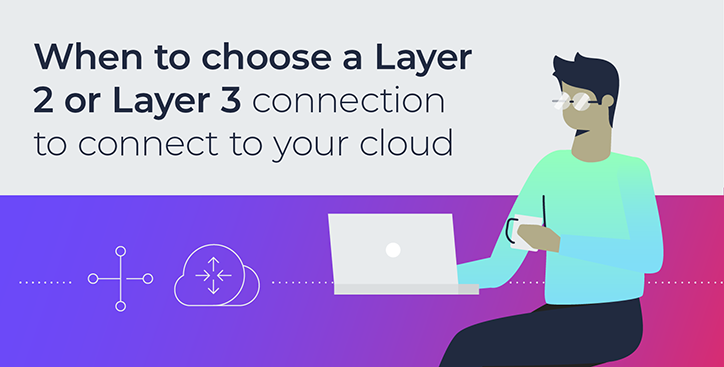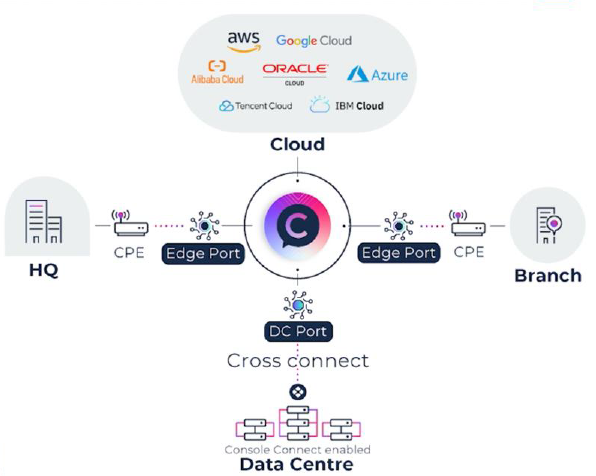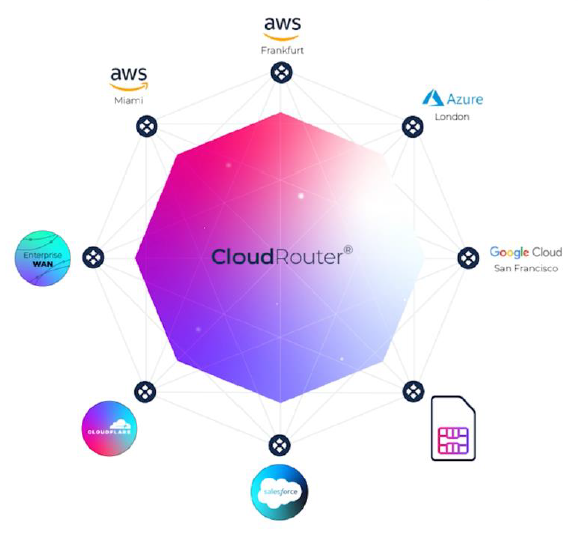When to choose a Layer 2 or Layer 3 connection to connect to your cloud
By Alex Hawkes|18 December, 2023

Console Connect is a flexible software-defined self-service platform that's ideal for connecting your enterprise campus or data centre to your public cloud resources over a private connection.
But when you make your interconnection you will have to decide between a Layer 2 or Layer 3 connection, also known as the Data Link Layer (L2) and the Network Layer (L3).
Let’s take a look at the difference between these options and when you would choose one over the other.
What is a Layer 2 interconnection?
If you want a simple, high-performance, low-latency, and possibly lowest-cost connection, Layer 2 is the way to go. A Layer 2 interconnection is a switched point-to-point Ethernet virtual circuit (VLAN) that connects two locations, such as an office building, a data centre, or a public cloud tenancy, through Console Connect.

A Layer 2 interconnection is good choice when:
- Your cloud-hosted applications mostly communicate with, or through, one other key location and will benefit from a direct private link offering flexible bandwidth
- You want to fully control the routing between your key locations without intervention from your service provider
For a Layer 2 interconnection you will also need the skills and resources to handle the IP networking and routing configuration on both ends of the interconnection - at the cloud tenancy end and in your CPE (Customer Premise Equipment).
To order, provision, and set up the end-to-end Layer 2 interconnection, you need three main components:
- A tenancy in a public cloud service. Console Connect has pre-established high-capacity links to an extensive range of ecosystem partners like AWS, Azure, Google Cloud, Oracle, Vultr, and IBM, as well as key SaaS partners like Salesforce, Cloudflare and others.
- A Console Connect Edge Port (at an office) or Data Centre Port (at a data centre). These ports are sometimes called Access Ports and provide an Ethernet physical connection into Console Connect’s software defined infrastructure.
- If you already have an Access Port set up you can use it again for another use case provided it has sufficient unallocated bandwidth.
- Finally, you need a Console Connect Layer 2 interconnection between your Edge Port and public cloud tenancy. This is the virtual circuit that will carry the traffic in each direction.
The Console Connect portal makes it simple for you to order the Layer 2 interconnection at the bandwidth you need.
What is a Layer 3 interconnection?
Multi location connectivity is where Layer 3 interconnection shines, as it’s capable of connecting different networks together. Even if your needs are straightforward enough to consider using a Layer 2 interconnection, you might simply want Console Connect to automatically configure and perform central routing on your behalf (or you might not have the skills in-house).
A Layer 3 interconnection to a public cloud tenancy relies on a Console Connect feature called CloudRouter®.
CloudRouter® is a global Layer 3 VPN-based on carrier-grade MPLS technology that offers many of the same capabilities as Layer 2 interconnections, such as privacy, on-demand provisioning, and selectable bandwidth but it simplifies your location-to-location routing because the constructs a logical full-mesh of connections inside the Console Connect network.
 When you choose Layer 3, CloudRouter® joins each of your sites and your cloud tenancy, routing your IP traffic between them. And since one CloudRouter® can support multiple Access Ports in data centres or enterprise buildings, as well as cloud connections, all at once, it’s a great choice if you need your cloud-hosted applications to communicate with several locations, including additional public cloud tenancies.
When you choose Layer 3, CloudRouter® joins each of your sites and your cloud tenancy, routing your IP traffic between them. And since one CloudRouter® can support multiple Access Ports in data centres or enterprise buildings, as well as cloud connections, all at once, it’s a great choice if you need your cloud-hosted applications to communicate with several locations, including additional public cloud tenancies.
Console Connect's CloudRouter® also supports Class of Service, with three different classes to support different application performance needs. You can use Class of Service to ensure your CloudRouter® treats each packet appropriately as it travels between your various end points.
To order, provision, and set up a network that uses CloudRouter®, you're going to need these main components:
- First, the CloudRouter® application itself. In most cases you only need one CloudRouter® because you will connect multiple locations and other supported Console Connect resources to it, but you can add more CloudRouter®s later if you need.
- You also need sites, cloud services, or other Console Connect resources that you want to attach to your CloudRouter®.
- These might be Edge Ports, Data Centre Ports, public cloud tenancies, or SaaS applications.
CloudRouter® is straightforward to order via the Console Connect portal. You only need to specify its name, total bandwidth capacity, and base term, which can be as little as one month.
Console Connect will provision and deliver the CloudRouter® within a few moments of your order. You can then attach your desired locations and resources and experience the other benefits of Console Connect.


.jpg)





.jpg)
